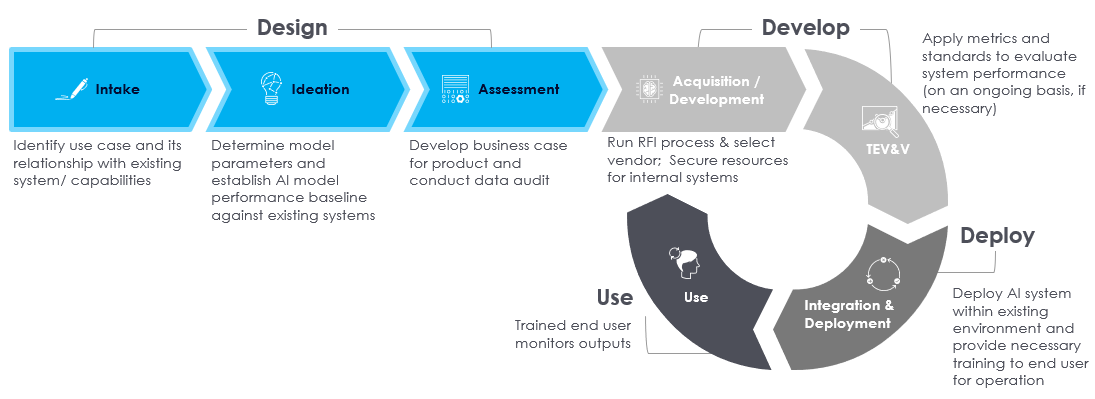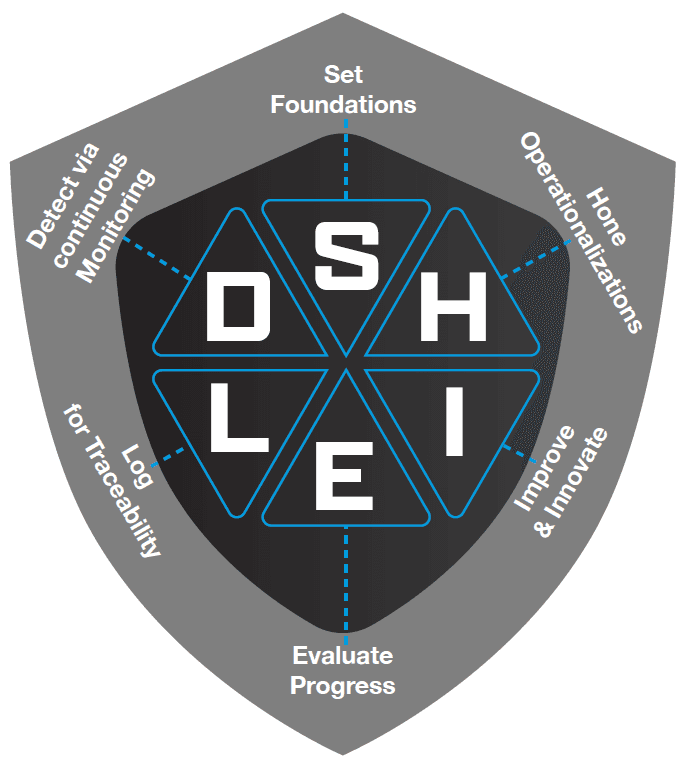Overview of RAI Activities throughout the Product Life Cycle

- Stage 1. Intake
- 1.1 Consider Previously Learned Lessons
- 1.2 Determine Relevant Laws, Ethical Frameworks, and Policies
- 1.3 Identify and Engage Stakeholders
- 1.4 Concretize the Use Case for the AI
- 1.5 Decide to Proceed to Ideation
- Stage 2. Ideation
- 2.1 Define Requirements
- 2.2 Identify Risks & Opportunities / Navigate Tradeoffs
- 2.3 Weigh and Navigate Ethical Tradeoffs
- 2.4 Write Ethical Statements of Concern
- 2.5 Design to Reduce Ethical/Risk Burdens
- 2.5 Accountability, Responsibility, & Access Flows and Governance
- Stage 3. Assessment
- 3.1 Assess Requirements, Statements of Concern, Mitigations, and Metrics
- 3.2 Exploratory Data Analysis
- 3.3 Conduct AI Suitability Assessment
- 3.4 Update Documentation
- Stage 4. Development/Acquisition
- 4.1 Instrument AI to Promote Assurance
- 4.2 Update Documentation
- Stage 5. TEVV
- 5.1 Test System for Robustness and Resilience
- 5.2 Revisit Documentation and Security
- 5.3 Update Documentation
- Stage 6. Integration & Deployment
- 6.1 Perform Operational Testing
- 6.2 Train Users
- 6.3 Establish Incident Response Procedures
- 6.4 Revisit Documentation and Security / Roll-up into Dashboards
- 6.5 Update Documentation
- Stage 7. Use
- 7.1 Perform Continuous Monitoring of the System and its Use, Context, and Ecosystem
- 7.2 Ensure Updating and Retraining
- 7.3 Plan for System Retirement
- 7.4 Record Lessons Learned
